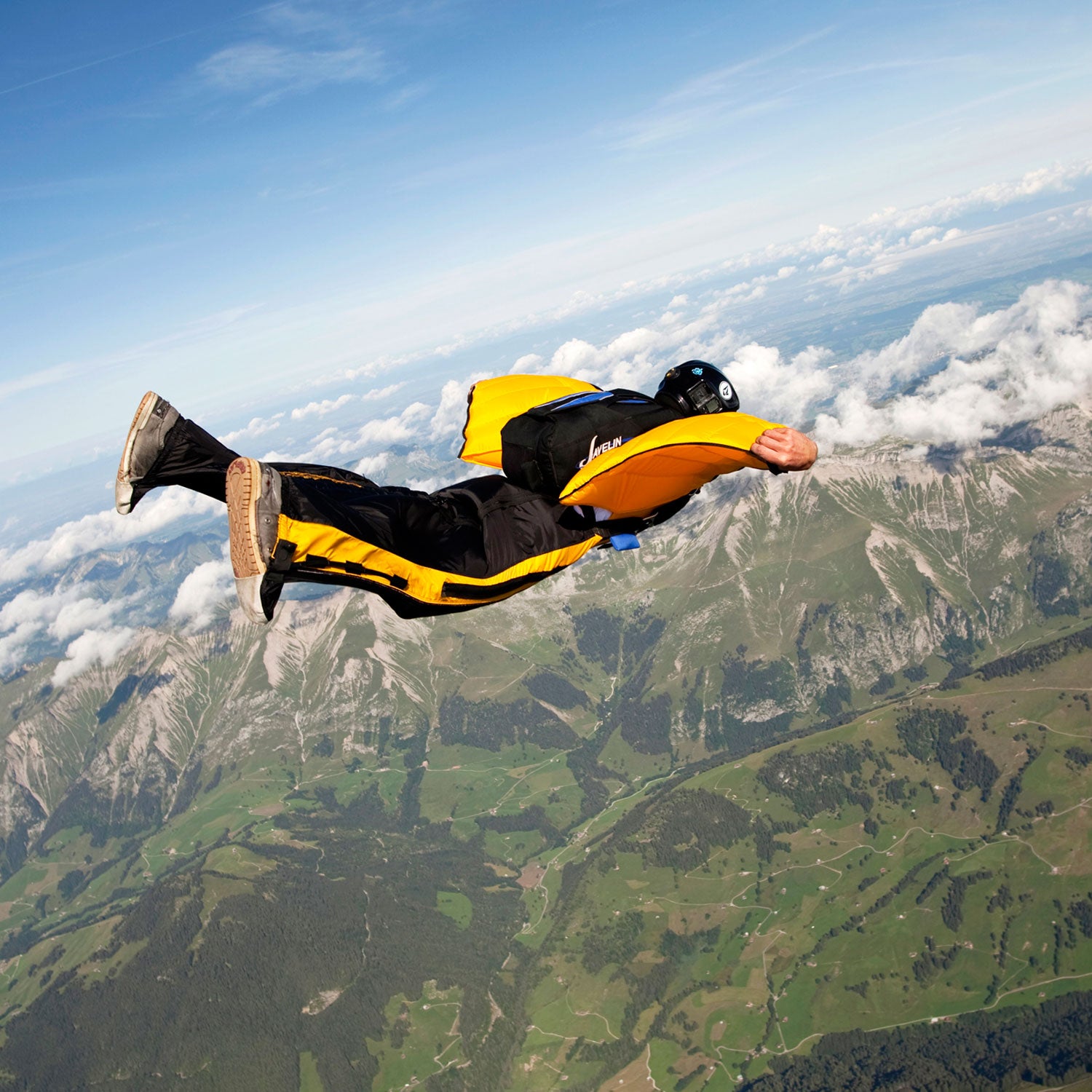The mayor of Chamonix, France, has  following the death of a Russian flier who died after crashing into a building earlier this week. This year has been a particularly bad one for the sportâa record 35 BASE jumpers have died so far, many of them in and around Chamonix, an epicenter of the sport. But that doesn't mean fatalities have been confined to just one area.
The first to die was Mat Kenney, who was wingsuiting among the steep sandstone slots and spires in northern Arizonaâs Paria Canyon in Januaryâan area suitable for only the most accomplished pilotsâwhen he attempted to make a hard, technical turn through a notch in the rock, friends and investigators say. The 29-year-old Kenney, an experienced pilot, collided with a cliff.
âI donât blame the activity,â says Scotty Bob Morgan, a leading wingsuit BASE jumper, and Kenneyâs best friend, while acknowledging that in an inherently risky sport, pushing the limits can be fatal. âThereâs only so far you can go until youâre going to find a wall.â
âWingsuits scare the shit out of me. Too many of my friends have died using them.â
Twenty-one of the jumping fatalities in 2016 involved wingsuit pilotsâone shy of a high of 22 in 2013. âIf you cut out wingsuit flying, the sport [of BASE jumping] would be very safe,â says Christopher McDougall, who runs an introductory BASE course from his home in Switzerland, and is known to jumpers worldwide as âDouggs.â The rash of deaths has left the BASE community, and plenty of outsiders, wondering whatâs going on.Â
This is the second time a ban has been placed on wingsuiting in Chamonix. The first lasted a year, from the summer of 2012 to 2013, following a death and another accident in one day on Le Brevent, an 8,000-foot peak. This time, Mayor Eric Fournier speculated that the wingsuiters who have died simply didn't have enough experience. There are undoubtedly more pilots than in the pastâalthough figures are impossible to confirm, with estimates varying from hundreds to thousandsâbut this year's deaths have included pilots who were both experienced and inexperienced. And the circumstances surrounding their fatal flights have varied greatly.
Even so, some pilots theorize that the latest spate of deaths is due to a common factor: advances in wingsuit design that have allowed less experienced pilots to pursue terrain flying, where they skim sometimes feet from a mountain slope. Â
âSuits are so good, itâs scary,â says Douggs. âThey are proper fighter planes.â
Wingsuits operate using air resistance: when a pilot jumps, vents on the wings inflate, creating an airfoil shape that increases forward motion while slowing descent. The best suits offer an optimal ratio of distance gained to verticality lostâmeaning they allow pilots to glide farther. Recent design improvements allow even intermediate pilots to fly three feet forward for every foot of descent, a ratio once reserved for only the most experienced. Suits are also more comfortable and simpler to fly, which is a double-edged sword: on the one hand, it enhances the skills of experienced pilots; on the other, it allows pilots to perform risky flights with less technique and training.Â
âYou can fly a higher performance suit with less experience now because they are easier to use,â says Matt Gerdes, an advanced pilot and co-designer and chief test pilot at Squirrel, a leading wingsuit and BASE gear manufacturer.
âSuits are so good, itâs scary. They are proper fighter planes.â
The recommended progression for a BASE jumper requires first amassing hundreds of skydives. Then they can advance to BASE jumpingâfirst from bridges and antennas and later to buildings and cliffs. Flying wingsuits requires training in skydiving, too. Only with years of experience in both jumping and piloting should a person combine the two and pursue wingsuit BASE.Â
For most of the history of BASE, the sportâs ranks were filled by already experienced skydivers who gained entrée by finding a mentor willing to teach the skills necessary for survival. The process was slow, personal, and clandestine.Â
But a recent proliferation of introductory BASE courses run for profit has lowered barriers to entry in the sport, meaning anyone with the money and minimum level of skydives can start training. With few standards and no oversight, Gerdes says instruction in some courses turns out poorly-prepared jumpers who unwittingly skip steps on their way to flying high-performance wingsuits. Itâs like giving the keys to a Bugatti to a 16-year-old with a fresh driverâs license.
One of the prerequisites to wingsuit BASE is a season or more spent jumping with a tracking suit, which inflates like a wingsuit but offers pilots more limb mobilityâmaking it easier to deploy and control a parachuteâand has less surface area and worse glide. Generally, tracking suits are safer to operate, although Gerdes, McDougall, and Morgan, suspect many newer pilots donât put in the necessary time flying them.
âItâs up to people if they skip steps,â says Gerdes. The path to wingsuit BASE has become quick and easy compared to, for instance, big-wave surfing and other sports that require years of physical training, and knowledge of the environment and weather, he says. âIf people want to use that [advanced gear] to risk their lives more, itâs tough to combat that.”Â
Typically, a pilot should take into account a battery of variables before a flight, too, such as wind, barometric pressure, and other micrometeorological factors at play at a given location. But Gerdes and McDougall suspect that they arenât. âTheyâre flying their suit like it works perfectly every time,â Douggs says.
Gerdes, McDougall, and Morgan, all say the sport would benefit from better education, a difficult task in an inherently individualistic activity without any central organizing body, or hard rules other than, “Donât die.” Gerdes suggests creating an institutionalized system of teaching that relies on ratings, similar to scuba diving or skydiving. âEveryone is friends. Nobody wants to be the guy who tells friends, âDonât get on the jump!ââ says Morgan, a skydiving wingsuit instructor.Â
Some have witnessed the death toll and donât need to be told. âWingsuits scare the shit out of me,â says Brian Mosbaugh, a 31-year-old climber, highliner, and jumper who lives in Moab, Utah, and has yet to graduate from a tracking suit to a wingsuit after three years in BASE. âToo many of my friends have died using them.â


